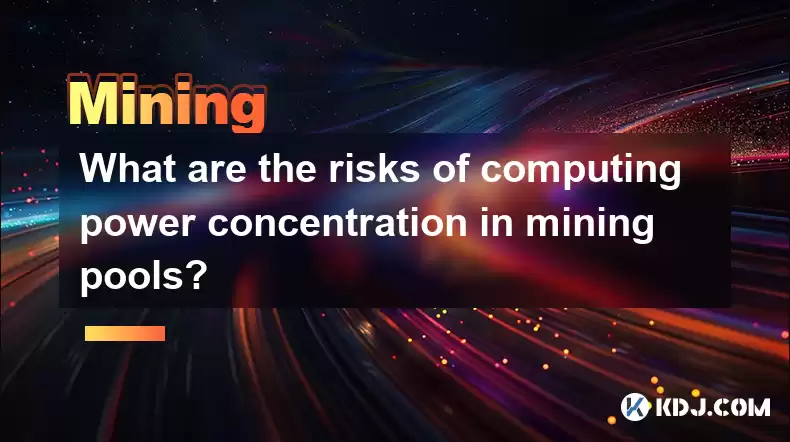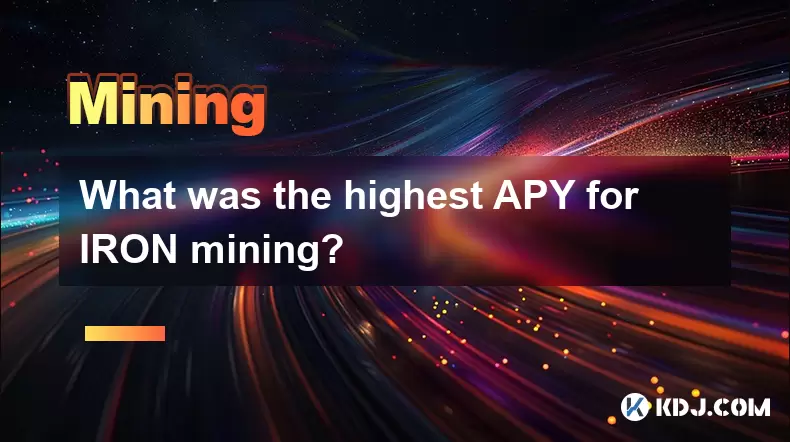-
 Bitcoin
Bitcoin $115200
0.74% -
 Ethereum
Ethereum $3730
6.71% -
 XRP
XRP $3.075
4.85% -
 Tether USDt
Tether USDt $1.000
0.01% -
 BNB
BNB $766.1
1.85% -
 Solana
Solana $168.7
4.22% -
 USDC
USDC $0.9999
0.00% -
 Dogecoin
Dogecoin $0.2097
5.42% -
 TRON
TRON $0.3327
1.72% -
 Cardano
Cardano $0.7547
4.04% -
 Stellar
Stellar $0.4156
4.83% -
 Hyperliquid
Hyperliquid $38.77
1.37% -
 Sui
Sui $3.589
4.15% -
 Chainlink
Chainlink $17.09
4.86% -
 Bitcoin Cash
Bitcoin Cash $574.6
5.82% -
 Hedera
Hedera $0.2523
1.95% -
 Avalanche
Avalanche $23.01
7.68% -
 Ethena USDe
Ethena USDe $1.001
-0.02% -
 Litecoin
Litecoin $120.4
9.83% -
 Toncoin
Toncoin $3.426
-4.06% -
 UNUS SED LEO
UNUS SED LEO $8.918
-0.53% -
 Shiba Inu
Shiba Inu $0.00001250
2.49% -
 Uniswap
Uniswap $9.956
8.52% -
 Polkadot
Polkadot $3.724
3.26% -
 Monero
Monero $304.7
0.19% -
 Dai
Dai $0.9999
-0.01% -
 Bitget Token
Bitget Token $4.394
1.48% -
 Cronos
Cronos $0.1400
6.96% -
 Pepe
Pepe $0.00001076
2.83% -
 Aave
Aave $268.4
3.45%
What are the risks of computing power concentration in mining pools?
Concentration of computing power in mining pools risks centralization, external influence, reduced security, economic manipulation, and governance issues in PoW blockchain networks.
Apr 16, 2025 at 06:00 pm

The concentration of computing power in mining pools is a significant issue within the cryptocurrency ecosystem, particularly for networks that rely on Proof of Work (PoW) consensus mechanisms. This phenomenon can have profound implications on the security, decentralization, and overall health of a blockchain network. In this article, we will explore the various risks associated with the concentration of computing power in mining pools, providing a detailed analysis of each risk and its potential impact on the cryptocurrency landscape.
Centralization of Control
One of the most critical risks associated with the concentration of computing power in mining pools is the centralization of control. When a single mining pool or a small group of pools control a significant portion of the network's hash rate, they gain disproportionate influence over the blockchain. This can lead to a situation where these pools can dictate the direction of the network, potentially undermining the decentralized nature of the cryptocurrency.
For instance, if a mining pool controls more than 51% of the network's hash rate, it can execute a 51% attack. This type of attack allows the pool to control the majority of the network's mining power, enabling them to double-spend coins, prevent the confirmation of new transactions, and even reverse transactions that were previously confirmed. Such an attack can severely compromise the integrity and security of the blockchain.
Vulnerability to External Influence
Another risk stemming from the concentration of computing power is the vulnerability to external influence. Mining pools that control a significant portion of the network's hash rate may be susceptible to pressure from governments, regulatory bodies, or other external entities. These entities could attempt to influence the mining pools to censor transactions, alter the blockchain's rules, or even shut down the network entirely.
For example, if a government were to pressure a dominant mining pool to censor transactions related to certain activities, it could effectively control what transactions are allowed on the blockchain. This not only undermines the principles of decentralization and freedom that many cryptocurrencies aim to uphold but also poses a significant threat to the network's integrity.
Reduced Network Security
The concentration of computing power in mining pools can also lead to reduced network security. When a large portion of the network's hash rate is controlled by a few pools, the overall resilience of the network against attacks is diminished. If one of these dominant pools were to be compromised by a hacker or suffer a technical failure, it could result in a significant drop in the network's hash rate, making it more vulnerable to attacks.
Moreover, the concentration of mining power can lead to a situation where smaller miners are pushed out of the network. As mining pools grow larger and more dominant, the barriers to entry for new miners increase, leading to a decrease in the overall number of participants in the network. This reduction in the diversity of miners can further weaken the network's security, as there are fewer independent actors to help maintain the integrity of the blockchain.
Economic Risks
The concentration of computing power in mining pools also introduces economic risks. When a few pools dominate the mining landscape, they can exert significant control over the mining rewards and fees associated with the network. This can lead to a situation where these pools can manipulate the market by adjusting their mining strategies to influence the supply and demand of the cryptocurrency.
For example, a dominant mining pool could decide to withhold newly mined coins from the market, creating artificial scarcity and driving up the price. Conversely, they could flood the market with newly mined coins, causing a price drop. Such manipulations can lead to increased volatility and uncertainty in the cryptocurrency market, affecting the confidence of investors and users.
Impact on Network Governance
Finally, the concentration of computing power in mining pools can have a significant impact on network governance. In many blockchain networks, miners play a crucial role in the governance process, as they are responsible for validating transactions and adding new blocks to the blockchain. When a few pools control a large portion of the network's hash rate, they can influence the outcome of governance decisions, such as protocol upgrades and changes to the network's rules.
For instance, if a mining pool disagrees with a proposed protocol upgrade, it could use its significant hash rate to block the upgrade from being implemented. This can lead to a situation where the network's development is hindered, and the interests of the broader community are not adequately represented. Such a scenario can result in a loss of trust in the network and a decline in its overall health and vitality.
Frequently Asked Questions
Q: How can the concentration of computing power in mining pools be mitigated?
A: There are several strategies that can be employed to mitigate the risks associated with the concentration of computing power in mining pools. One approach is to encourage the development of more decentralized mining solutions, such as solo mining or smaller, community-driven mining pools. Additionally, some blockchain networks have implemented mechanisms to incentivize a more diverse distribution of mining power, such as adjusting the mining rewards to favor smaller miners or implementing penalties for pools that exceed a certain threshold of the network's hash rate.
Q: Are there any cryptocurrencies that have successfully addressed the issue of mining pool concentration?
A: Some cryptocurrencies have taken steps to address the issue of mining pool concentration. For example, Bitcoin Cash implemented a mechanism called the "Emergency Difficulty Adjustment" (EDA) to help prevent the concentration of mining power. Additionally, some newer cryptocurrencies have adopted alternative consensus mechanisms, such as Proof of Stake (PoS), which are less susceptible to the risks associated with mining pool concentration.
Q: How can individual users protect themselves from the risks associated with mining pool concentration?
A: Individual users can take several steps to protect themselves from the risks associated with mining pool concentration. One approach is to diversify their cryptocurrency holdings across multiple networks, reducing their exposure to any single network that may be vulnerable to mining pool concentration. Additionally, users can support and participate in decentralized mining initiatives, helping to promote a more balanced distribution of mining power across the network. Finally, staying informed about the governance and security developments of the networks they use can help users make more informed decisions about their cryptocurrency investments.
Disclaimer:info@kdj.com
The information provided is not trading advice. kdj.com does not assume any responsibility for any investments made based on the information provided in this article. Cryptocurrencies are highly volatile and it is highly recommended that you invest with caution after thorough research!
If you believe that the content used on this website infringes your copyright, please contact us immediately (info@kdj.com) and we will delete it promptly.
- Cryptocurrency, Altcoins, and Profit Potential: Navigating the Wild West
- 2025-08-04 14:50:11
- Blue Gold & Crypto: Investing Disruption in Precious Metals
- 2025-08-04 14:30:11
- Japan, Metaplanet, and Bitcoin Acquisition: A New Era of Corporate Treasury?
- 2025-08-04 14:30:11
- Coinbase's Buy Rating & Bitcoin's Bold Future: A Canaccord Genuity Perspective
- 2025-08-04 14:50:11
- Coinbase's Buy Rating Maintained by Rosenblatt Securities: A Deep Dive
- 2025-08-04 14:55:11
- Cryptos, Strategic Choices, High Returns: Navigating the Meme Coin Mania
- 2025-08-04 14:55:11
Related knowledge

What was the highest APY for IRON mining?
Jul 23,2025 at 05:14am
Understanding IRON Token and Its Mining MechanismThe IRON token is a stablecoin that operates within the Iron Finance ecosystem, primarily on blockcha...

What is impermanent loss in IRON pools?
Jul 23,2025 at 09:00am
Understanding Impermanent Loss in the Context of IRON PoolsImpermanent loss is a phenomenon that affects liquidity providers in decentralized finance ...

How to claim rewards from IRON mining?
Jul 23,2025 at 02:21pm
Understanding IRON Mining and Reward MechanismsIRON Finance operated as a decentralized finance (DeFi) protocol on the Polygon and Binance Smart Chain...

How to claim rewards from IRON mining?
Jul 29,2025 at 05:07am
Understanding IRON Mining and Reward MechanismIRON is a dual-token system designed to stabilize the value of a synthetic asset through a combination o...

IRON mining tutorial for beginners
Jul 27,2025 at 12:01am
What Is IRON and How Does It Work in the Cryptocurrency Ecosystem?IRON is a cryptocurrency token that operates on the Binance Smart Chain (BSC) and is...

How to calculate APY for IRON mining?
Jul 28,2025 at 09:49am
Understanding APY in the Context of IRON Token MiningWhen engaging in IRON token mining within decentralized finance (DeFi) platforms, Annual Percenta...

What was the highest APY for IRON mining?
Jul 23,2025 at 05:14am
Understanding IRON Token and Its Mining MechanismThe IRON token is a stablecoin that operates within the Iron Finance ecosystem, primarily on blockcha...

What is impermanent loss in IRON pools?
Jul 23,2025 at 09:00am
Understanding Impermanent Loss in the Context of IRON PoolsImpermanent loss is a phenomenon that affects liquidity providers in decentralized finance ...

How to claim rewards from IRON mining?
Jul 23,2025 at 02:21pm
Understanding IRON Mining and Reward MechanismsIRON Finance operated as a decentralized finance (DeFi) protocol on the Polygon and Binance Smart Chain...

How to claim rewards from IRON mining?
Jul 29,2025 at 05:07am
Understanding IRON Mining and Reward MechanismIRON is a dual-token system designed to stabilize the value of a synthetic asset through a combination o...

IRON mining tutorial for beginners
Jul 27,2025 at 12:01am
What Is IRON and How Does It Work in the Cryptocurrency Ecosystem?IRON is a cryptocurrency token that operates on the Binance Smart Chain (BSC) and is...

How to calculate APY for IRON mining?
Jul 28,2025 at 09:49am
Understanding APY in the Context of IRON Token MiningWhen engaging in IRON token mining within decentralized finance (DeFi) platforms, Annual Percenta...
See all articles

























































































